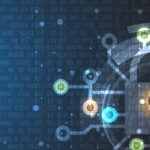As waves of capital reshape reinsurer’s business model, the property/casualty (P/C) insurance industry needs to change, although how remains a matter of debate.
Reinsurers face a growing threat from the capital markets — hedge funds, pensions and others that have found innovative ways to replicate what reinsurers do. This so-called alternative capital is driving reinsurance prices lower, especially the cost of reinsuring losses from Florida hurricanes.
There are signs alternative capital will seep into other areas of P/C insurance and reinsurance. How reinsurers can respond was discussed by analysts at the Casualty Actuarial Society’s (CAS) Seminar on Reinsurance in New York.
Alan Zimmermann, managing director of Assured Research, and Matthew C. Mosher, senior vice president of rating services for A.M. Best Co. and a fellow of the CAS, believe the industry needs to move on to new opportunities.
“If you are not willing to change with society, you are going to lose your relevance,” Mosher said.
Meyer Shields, managing director at Keefe, Bruyette and Woods and CAS fellow, counseled a modest approach, such as probing carefully to find profitable niches. “We’re not in the business of solving the world’s problems, we’re in the business of increasing the value for shareholders,” he said.
Not New
The new capital has emerged in recent years, but its start harkens back at least two decades to Hurricane Andrew in 1992.
Today, Zimmermann said, Andrew doesn’t seem like it would have been so important in its day. The insured losses from the storm, $23 billion in today’s dollars, pale compared to more recent events like the $47 billion in inflation-adjusted losses from Katrina. But Andrew’s losses were four times greater than anything that preceded it.
The storm shook the industry. Perhaps the biggest change it brought was a new degree of acceptance of computer modeling. The models made catastrophe risk, once the uber-specialty of insurers and reinsurers, easier for others to understand and price.
Zimmermann recalled the powerhouse reinsurers from pre-Andrew days: awesome behemoths, whose size, customer base and underwriting depth made them seem like impregnable “castles surrounded by the Hudson.”
Those models have been honed, and today capital market investors rely heavily on them as they invest in the P/C space. The dominance of reinsurers has ebbed. “There are a lot more companies,” Zimmermann said.
As new capital flows in, the price of reinsurance falls. Reinsurers have generally responded well to the immediate situation, writing less business as rates shriveled. Some even practice a sort of arbitrage, writing risks then ceding them into the capital markets at a lower price.
For the long run, reinsurers have responded slowly, Zimmermann said, as have most P/C insurers.
Zimmermann and Mosher agreed that the industry needs to embrace new risks, like cyber liability.
Shields said companies need to face the changes that are happening and find ways to benefit. It can take time, he said, to find underwriters who understand new lines of business. “Capital is fungible,” Shields said. “Underwriting discipline is not.”
Inflation
The analysts discussed how the industry has benefited from low inflation. Standard reserving methods have an underlying rate of inflation built into them; low inflation has allowed companies to improve earnings by releasing reserves from older years as they have proved redundant.
Now, Mosher said, those reserving methods have low inflation baked into them. An uptick could mean P/C company reserves could become inadequate.
Low inflation also means company profits grow more volatile, Shields said. Companies rely less on investment income and more on underwriting income. Investment income mainly comes from bonds. Underwriting profits come from business a company underwrites, which is more volatile.
Zimmermann agreed, recalling the steep price increases of the 1970s. “If you haven’t lived in a world of 10 percent inflation, you can’t realize how debilitating it is.”
That experience taught Zimmerman how investors view insurance companies. During his career, insurers have returned 8 percent on equity. Stocks, measured by Standard & Poor’s, have returned 13 percent.
The underwhelming returns have made P/C values consistently lower than the rest of the market. The new capital hasn’t made the situation easier, he said.
“You can’t be in a business with growing competition and expect your stock to do well in the long term,” he said.
Topics Profit Loss Underwriting Reinsurance Property Casualty
Was this article valuable?
Here are more articles you may enjoy.



 Weeks Later, Erie and Philadelphia Insurance Still Working to Restore Networks
Weeks Later, Erie and Philadelphia Insurance Still Working to Restore Networks  ‘Abolishing FEMA’ Memo Outlines Ways for Trump to Scrap Agency
‘Abolishing FEMA’ Memo Outlines Ways for Trump to Scrap Agency  DC Sues 4 Drivers With 1,000 Outstanding Traffic Violations
DC Sues 4 Drivers With 1,000 Outstanding Traffic Violations  As Hurricane Season Picks Up, Key Forecasting Tool Access Set to End
As Hurricane Season Picks Up, Key Forecasting Tool Access Set to End 


